Concepts
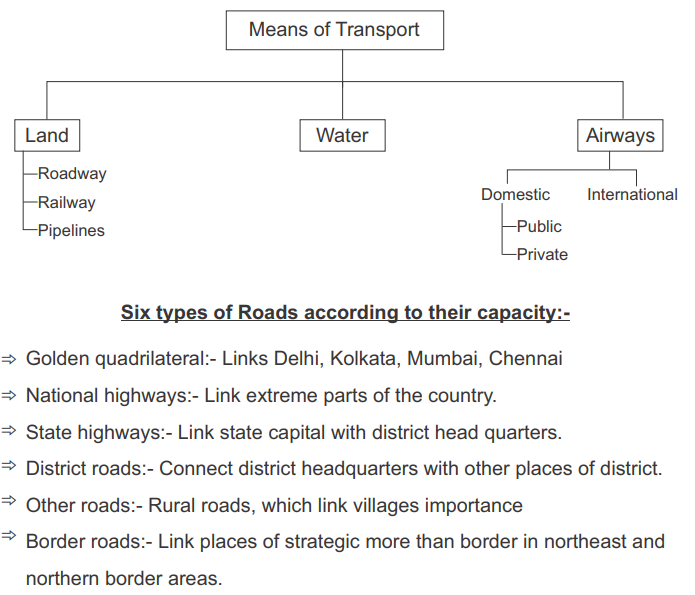
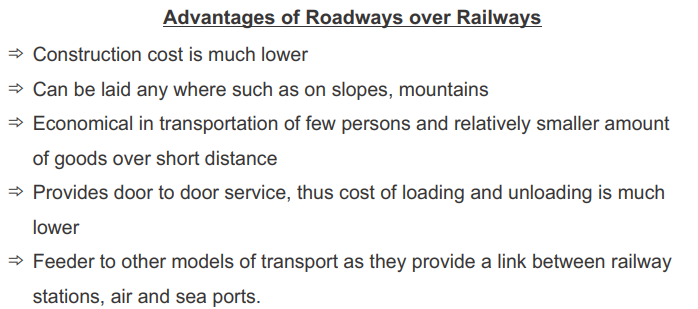
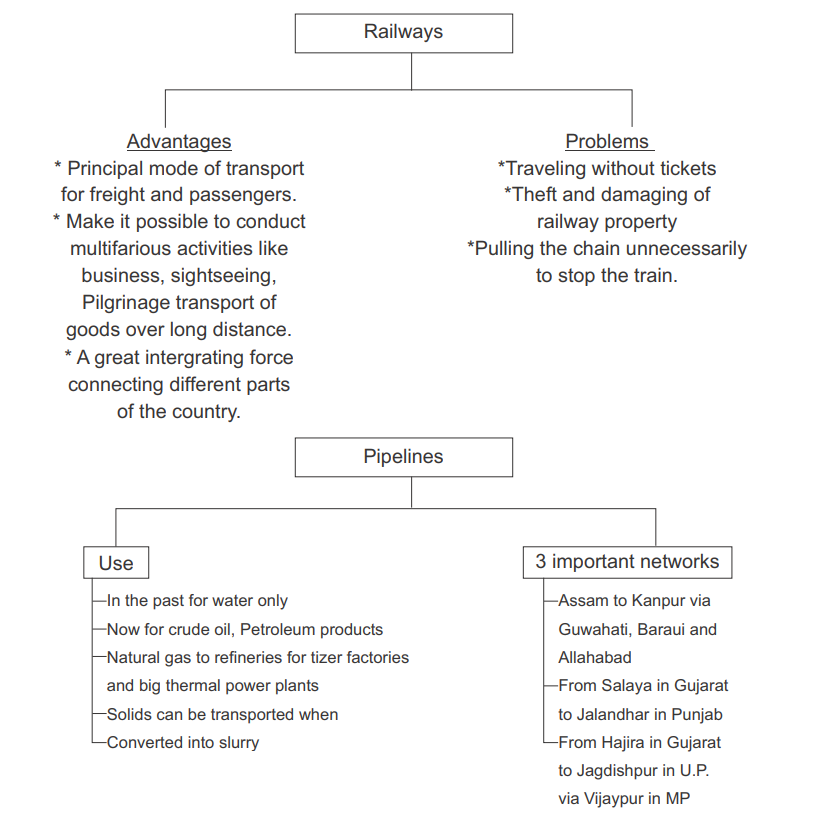
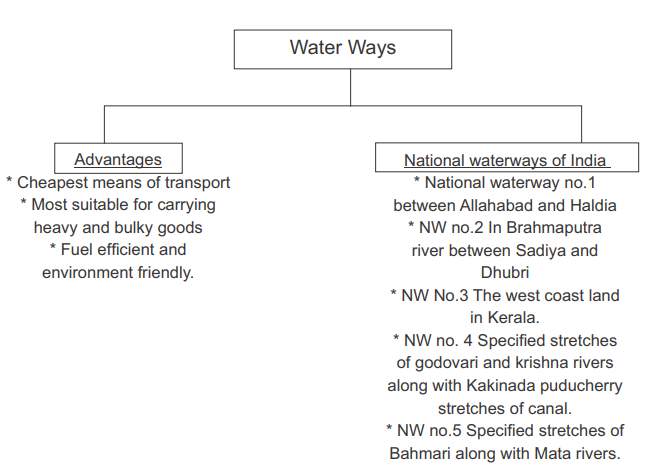
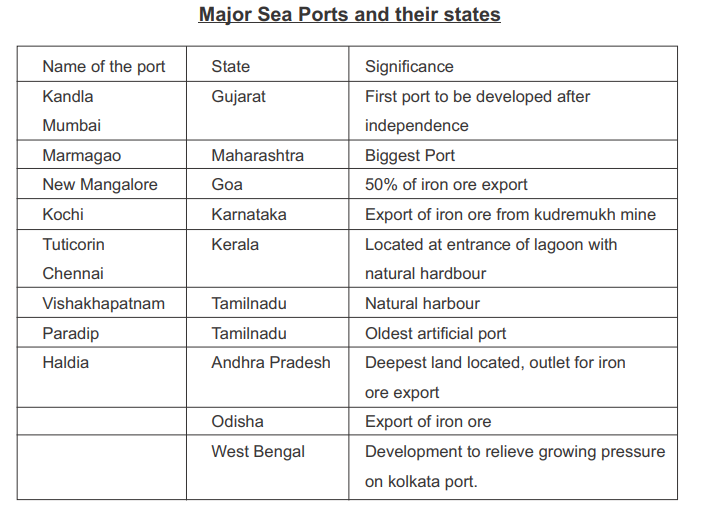
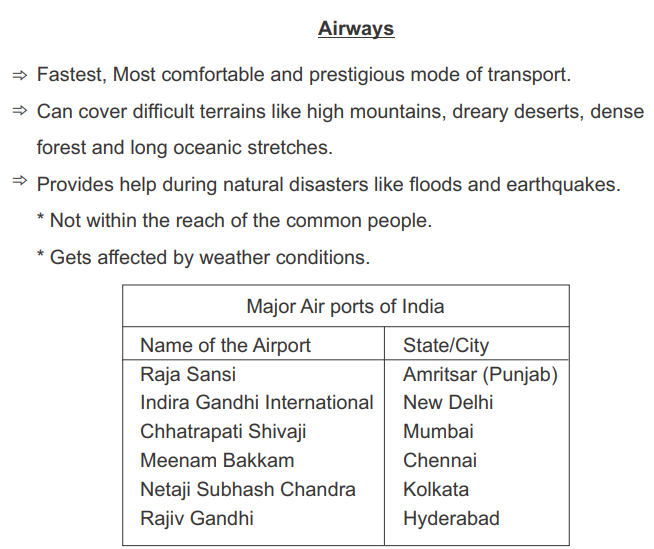
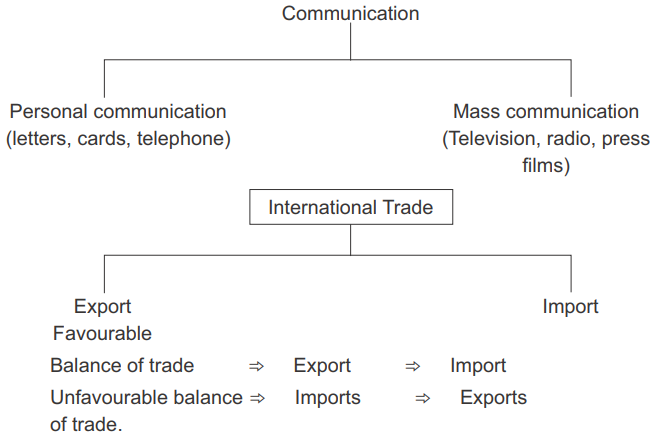
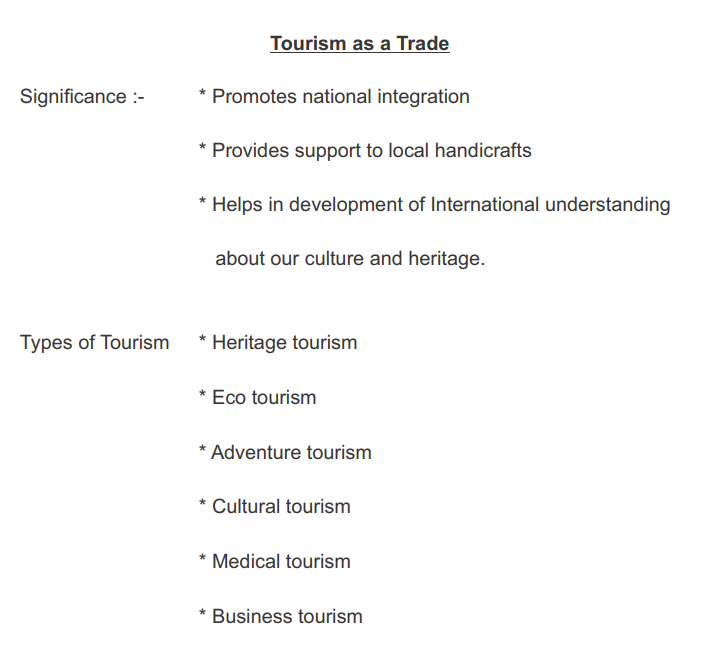
Key points:
- Life lines of a country-Modern means of communication and transport which brings people together and helps in local, national and
international trade. - Means of Transport-Means of transports which make possible the movement of goods, services and humans/animals from one place to
another place. - Means of communication-Methods through which information, news,dialogue etc. communicated from one place and person to another place
and person are called means of communication. Such as newspaper, radio, T.V. telephone, mobile phone, e-mail etc. - Golden Quadrilateral-The six lane superhighways which being implemented by National highway Authority of India(NHAI) and connects Delhi, Mumbai, Kolkata and Chennai (the four metro cities)
- National Highways-Four to six lane highways which connects or link extreme parts of the country and maintained by Central Public Works
Department (CPWD) - Border Roads-Border Roads Organisation a Government of India undertaking constructs and maintains roads in the bordering areas of
the country. These roads are border roads and improve the accessibility in areas of difficult terrain. - Trade-Exchange of goods and services among different peoples, states and countries referred to as trade.
- International Trade-Trade between two and more countries is called International trade. 95% of country's trade volume is moved by sea.
- Balance of Trade-The balance of trade of a country is the difference between it's export and import.
- Rail Transport-A major means of transport in India. The Indian Railways is now reorganised in 16 zones in 2003.
- Gauge or track-It is the distance between the two tracks of rail.
- Port -The manmade place or facility near the sea cost where ships, boats and barges can be docked to load unload people, things etc. Fuel and
other needs can also be taken here. Aport is different than a harbour. - Tidal port - A port in which the water level within the port is subject to change with the ocean tides. These ports are found in coastal region.
e.g. Kandla. - New forms of Tourism-Heritage tourism, eco tourism, adventure tourism , cultural tourism, medical tourism and business tourism. Over 2.6 million
foreign tourists visit India every year.
Transport
The movement of goods and services can be over three important domains of our earth, i.e., land, water and air. Based on these, transport can also be classified into land, water and air transport. Let’s discuss them in detail.
Roadways
India has one of the largest road networks in the world, aggregating about 54.7 lakh km. The growing importance of road transport over rail transport is mentioned below:
- The construction cost of roads is much lower than that of railway lines.
- Roads can cover more geographically harder locations that cannot be done by the railways.
- Roads can negotiate higher gradients of slopes and can be easily built-in traverse mountains such as the Himalayas.
- Road transport is economical.
- It also provides door-to-door service.
- Road transport provides links between railway stations, air and seaports.
In India, roads are classified into the following six classes according to their capacity.
Golden Quadrilateral Super Highways
Golden Quadrilateral is a network of Highways connecting India’s four top metropolitan cities, namely Delhi, Kolkata, Chennai, and Mumbai. These highway projects are being implemented by the National Highway Authority of India (NHAI).
National Highways
The National Highways are a network of trunk roads that are laid and maintained by the Central Public Works Department (CPWD). The historical Sher-Shah Suri Marg is called National Highway No.1, between Delhi and Amritsar.
State Highways
Roads linking a state capital with different district headquarters are known as State Highways. These roads are constructed and maintained by the State Public Works Department (PWD).
District Roads
These roads connect the district headquarters with other places in the district. These roads are maintained by the Zila Parishad.
Other Roads
Rural roads, which link rural areas and villages with towns, are classified under this category. These roads received special impetus under the Pradhan Mantri Grameen Sadak Yojana.
Border Roads
Border Roads Organisation constructs and maintains roads in the bordering areas of the country. This organisation was established in 1960 for the development of roads of strategic importance in the northern and north-eastern border areas.
Roads can also be classified on the basis of the type of material used for their construction, such as:
- Metalled roads may be made of cement, concrete or even bitumen or coal. These are all-weather roads.
- Unmetalled roads go out of use in the rainy season.
Railways
Railways are the principal mode of transportation for carrying huge loads and bulky goods for long and short distances in India. Railways have become more important in India’s economy. However, rail transport suffers from certain problems as well, which are mentioned below:
- Construction of bridges is required across rivers’ wide beds for laying down the railway lines.
- In the hilly terrains of the peninsular region, railway tracks are laid through low hills, gaps or tunnels.
- The Himalayan mountainous regions are also unfavourable for the construction of railway lines due to the highest elevation points in the surface, sparse population and lack of economic opportunities.
- It is difficult to lay railway lines on sandy plains.
Pipelines
A pipeline network uses pipes, usually underground, to transport and distribute fluids. These are used to transport water, crude oil, petroleum products and natural gas, fertilizer factories and big thermal power plants. Solids can also be transported through a pipeline when converted into a slurry.
There are 3 important networks of pipeline transportation in the country.
- From oil field in upper Assam to Kanpur (Uttar Pradesh)
- From Salaya in Gujarat to Jalandhar in Punjab
- From Hazira in Gujarat to Jagdishpur in Uttar Pradesh
Waterways
Waterways are the cheapest means of transport. They are most suitable for carrying heavy and bulky goods. It is a fuel-efficient and environment-friendly mode of transport.
The National Waterways in India are:
- N.W. No.1 – The Ganga River between Allahabad and Haldia (1620 km).
- N.W. No.2 – The Brahmaputra River between Sadiya and Dhubri (891 km).
- N.W. No.3 – The West-Coast Canal in Kerala (Kottapurma-Kollam, Udyogamandal and Champakkara canals-205 km).
- N.W. No.4 – Specified stretches of Godavari and Krishna rivers along with the Kakinada Puducherry stretch of canals (1078 km).
- N.W. No.5 – Specified stretches of river Brahmani along with Matai river, delta channels of Mahanadi and Brahmani rivers and East Coast Canal (588 km).
Inland waterways in India are Mandavi, Zuari and Cumberjua, Sunderbans, Barak and the backwaters of Kerala through which transportation takes place.
Major Sea Ports
India’s trade with foreign countries is carried from the ports. There are 2 major and 200 notified non-major (minor/intermediate) ports in India.
Here is the list of major ports in India:
- Kandla in Kachchh was the first port to be developed after independence. It is also known as the Deendayal Port.
- Mumbai is the biggest port with a spacious natural, and well-sheltered harbour.
- Marmagao Port (Goa) is the premier iron ore exporting port of India.
- Mangalore Port, located in Karnataka, caters to the export of iron ore.
- Kochchi is the extreme southwestern port located at the entrance of a lagoon.
- Tuticorin Port is situated in the extreme southeast.
- Chennai is one of the oldest artificial ports in India.
- Visakhapatnam is the deepest landlocked and well-protected port
- Paradwip Port, located in Odisha, specialises in the export of iron ore.
- Kolkata is an inland riverine port.
- Haldia port was developed as a subsidiary port in order to relieve growing pressure on the Kolkata port.
Airways
The airway is the fastest, most comfortable and most prestigious mode of transport. Air travel has made access easier to the terrain areas like high mountains, dreary deserts, dense forests and long oceans. Air transport was nationalised in 1953. Air India provides domestic and international air services.
Pawanhans Helicopters Ltd. provides helicopter services to Oil and Natural Gas Corporation in its off-shore operations in inaccessible areas and difficult terrains. But, air travel is not within the reach of the common people.

